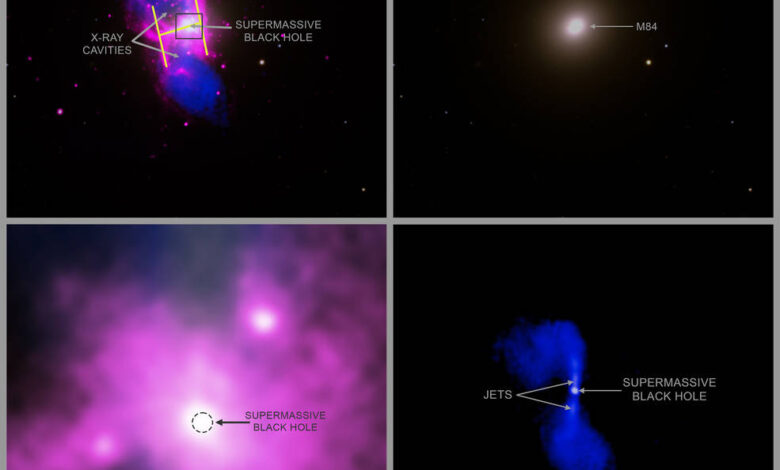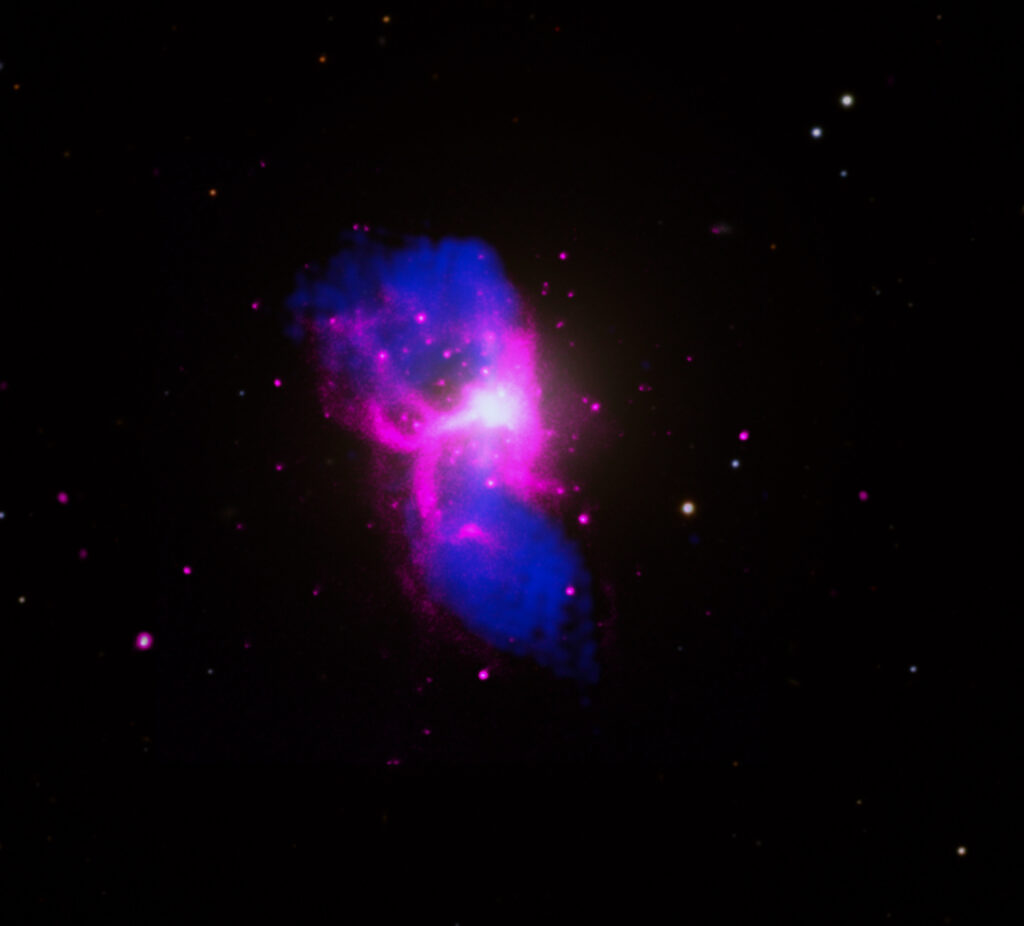The Hot and Huge “H” in Chandra Image: Black Hole Leaves Its Mark on Surroundings
Astronomers used NASA’s Chandra X-ray Observatory to make a map of the hot gas in and around M84

A giant black hole located at the center of a massive elliptical galaxy is creating an “H”-shaped structure in the X-ray glow around it, according to a new X-ray map of the multimillion-degree gas around the galaxy Messier 84 (M84). This structure is an example of pareidolia, where familiar shapes or patterns are seen in random data, and it is created as some of the gas falls into the black hole and the rest is blasted away in the form of jets of particles.

Astronomers used NASA’s Chandra X-ray Observatory to make a map of the hot gas in and around M84, which primarily radiates at temperatures in the tens of millions of degrees, making it observable in X-rays. The huge letter “H” is about 40,000 light-years tall, which is roughly half the width of the Milky Way. The radio image from the National Science Foundation’s Karl G. Jansky Very Large Array reveals the jets streaking away from the black hole, while the optical data from the Sloan Digital Sky Survey shows M84 and neighboring galaxies. Researchers studying M84 with Chandra and the VLA found that the jets may influence the flow of the hot gas towards the black hole even more than the gravitational pull from the black hole.
The authors tested a model called Bondi accretion, where all matter within a certain distance from a black hole should be affected by a black hole’s gravity and start falling inward at the same rate from all directions. However, the results show that Bondi accretion is not occurring in M84 because matter is not falling towards the black hole evenly from all directions.
The supermassive black hole in M84, along with those in our galaxy, M87, NGC 3115, and NGC 1600, are the only ones close enough to Earth, or massive enough, for astronomers to see details in Chandra images which are so near the black hole that gas should be falling inwards. Like the black hole in M87, the one in M84 is producing a jet of particles, but the point source of X-rays from material even closer to the black hole is over ten times fainter for M84. This allows more detailed study of gas falling towards the black hole in M84 that is farther out, preventing the faint X-rays produced by this gas from being overwhelmed by the X-ray glare from the point source.
The study was led by Christopher Bambic, a graduate student at Princeton University, and other authors include Helen Russell, Christopher Reynolds, Andy Fabian, Brian McNamara, and Paul Nulsen. A paper describing these results appears in The Monthly Notices of the Royal Astronomical Society.




